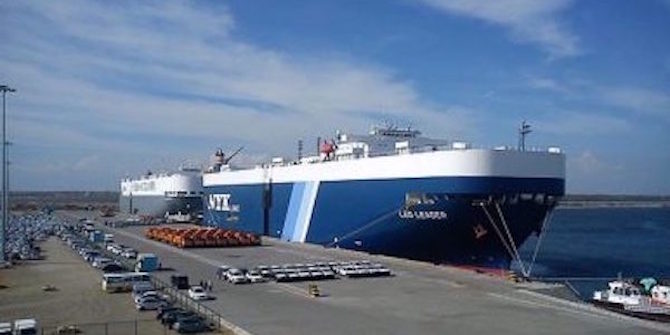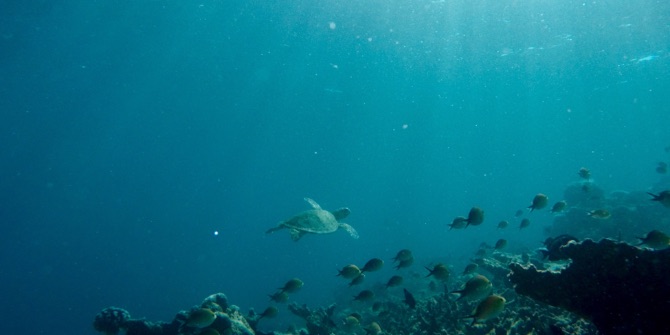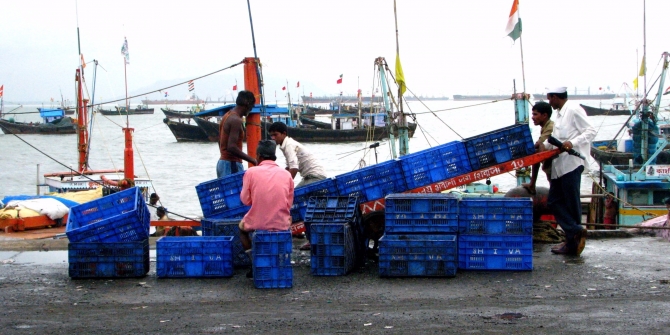 The Maldives are suffering the catastrophic results of climate change including the devastating impact of coral bleaching. Using images from her conservation work, Smrutica Jithendranath provides a glimpse of marine life and the ways in which marine conservationists are resurrecting coral reefs.
The Maldives are suffering the catastrophic results of climate change including the devastating impact of coral bleaching. Using images from her conservation work, Smrutica Jithendranath provides a glimpse of marine life and the ways in which marine conservationists are resurrecting coral reefs.
“The sea, once it casts its spell, holds one in its net of wonder forever” – Jacques Cousteau
The Maldives are the ultimate tourist destination for anyone seeking out turquoise blue waters that shimmer along white sandy beaches with a plethora of marine creatures to explore underwater. For years, people from all over the world have travelled to this little treasure in the Indian Ocean to relax, have a romantic getaway, family holiday, to dive and much more. The Maldives are comprised of 26 atolls and 1192 coral islands. These islands are largely categorised into local and resort islands.
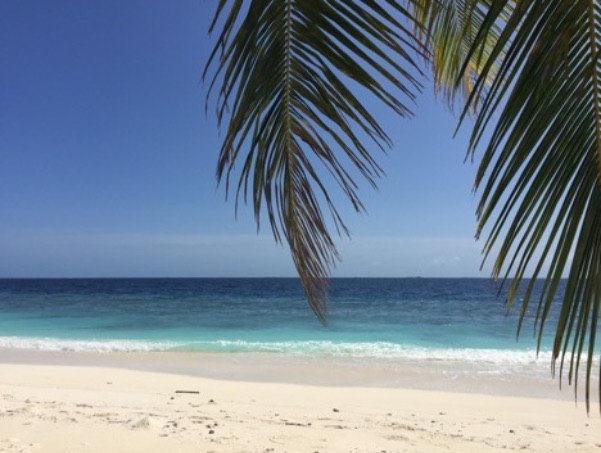 View from the shore, white sand and blue waters. Photo credit: Smrutica Jithendranath.
View from the shore, white sand and blue waters. Photo credit: Smrutica Jithendranath.
Each island is covered in lush green vegetation and surrounded by the turquoise blue waters. The typical view from any part of the island predominantly is made up of the colour blue. The blue sky and the blue water. This is sometimes also accompanied by some of the creatures that live in the big, wide blue. Sitting on the beach, one is likely to see a turtle coming up for air, the little fin tips of eagle rays, or the well distinguishable dorsal fin of a shark.
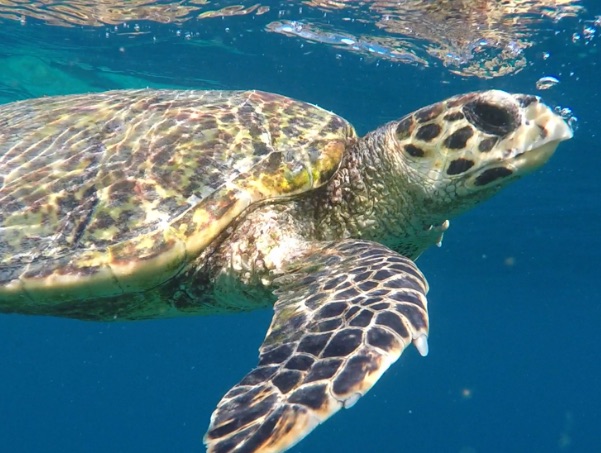 A hawksbill turtle surfacing for air. Photo credit: Smrutica Jithendranath.
A hawksbill turtle surfacing for air. Photo credit: Smrutica Jithendranath.
Diving into these waters with a snorkel mask on, the world that is visible below the surface will takes one’s breath away. Senses are heightened by the visual feast of colours. If you pay close attention, you can listen to the noises of the fish eating and communicating with one another. Once you put your head down, time is a concept that is very quickly lost.
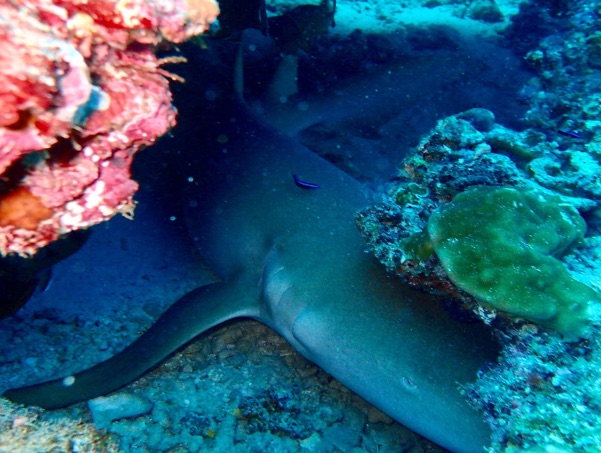 A nurse shark sleeps under a piece of boulder coral. Photo credit: Smrutica Jithendranath.
A nurse shark sleeps under a piece of boulder coral. Photo credit: Smrutica Jithendranath.
Coral reef conservation
The coral reef is the dominant ecosystem in the waters of the Maldives. Sheltering thousands of different species of marine animals, corals are an important part of the heritage and culture of the country. Scuba diving is a big part of the tourism industry and people travel to these paradise islands to see the myriad of colours coral reefs have to offer.
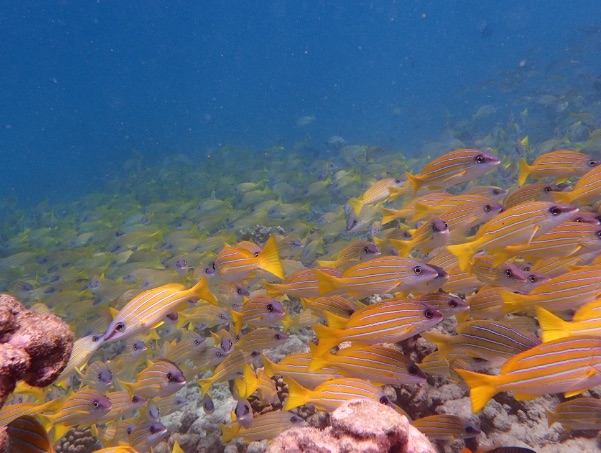 A massive school of blue striped snapper colours the water yellow. Photo credit: Smrutica Jithendranath.
A massive school of blue striped snapper colours the water yellow. Photo credit: Smrutica Jithendranath.
However, climate change has in fact affected the reefs globally, and The Maldives is no exception. The rising temperature in the atmosphere is in turn raising the temperatures of the water. This is causing the reefs from all over the world to lose their colour by losing symbiotic algae.
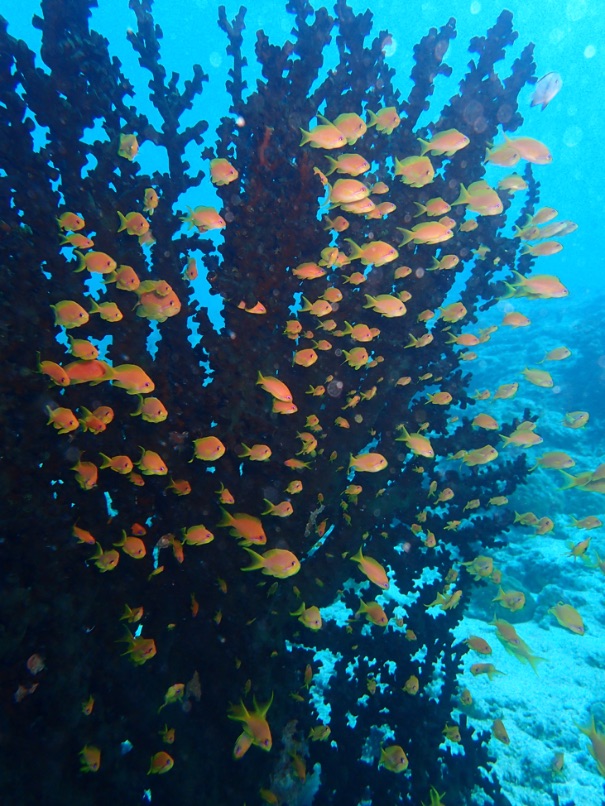 Anthias gather around the black coral for shelter. Photo credit: Smrutica Jithendranath.
Anthias gather around the black coral for shelter. Photo credit: Smrutica Jithendranath.
The coral reefs around the Maldives are beginning to look like the below picture as a result of the increase in the frequency of hot summers over the last few years.
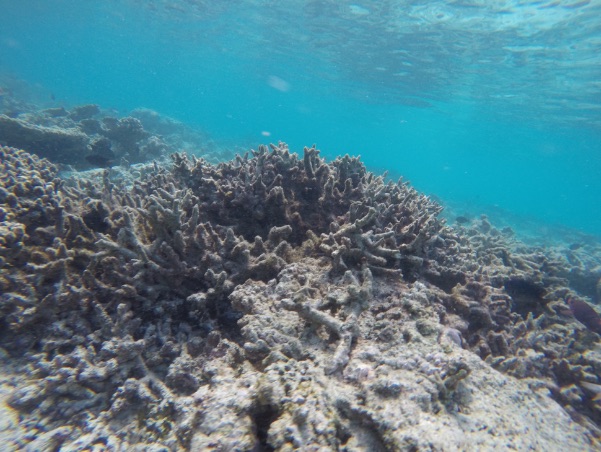 Coral suffering from the impact of bleaching. Photo credit: Smrutica Jithendranath.
Coral suffering from the impact of bleaching. Photo credit: Smrutica Jithendranath.
This has a catastrophic impact on all the marine creatures up the food chain, ultimately resulting in the loss of marine megafauna such as sharks and whales. Therefore, conservation of coral reefs is of paramount importance; to preserve this ecosystem which provides food, shelter and protection to countless marine organisms.
Creating artificial coral reefs
In the Maldives, most of the island resorts are aware of the importance of conservation of the marine environment and efforts towards this have been going on for decades now. One of the most popular measure taken by marine biologists throughout the country is creating artificial reefs. Artificial reefs aid in growth and regeneration of the corals around the house reef of an island.
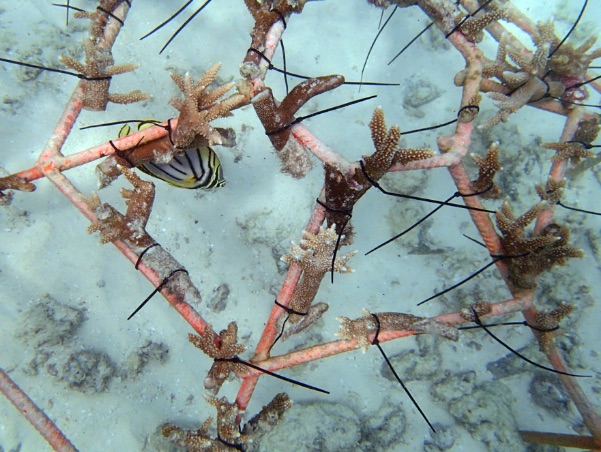 Cable ties securing coral fragments to the scaffold structure. Photo credit: Smrutica Jithendranath.
Cable ties securing coral fragments to the scaffold structure. Photo credit: Smrutica Jithendranath.
Artificial reefs are made out of metal rebar structures that are shaped as per the designer’s specification and these structures act as a stable substrate for the corals that are transplanted. Once the structure is ready, it is placed in the water. Small or large pieces of corals that are broken off or damaged, are collected and attached to these structures using cable ties (see above).
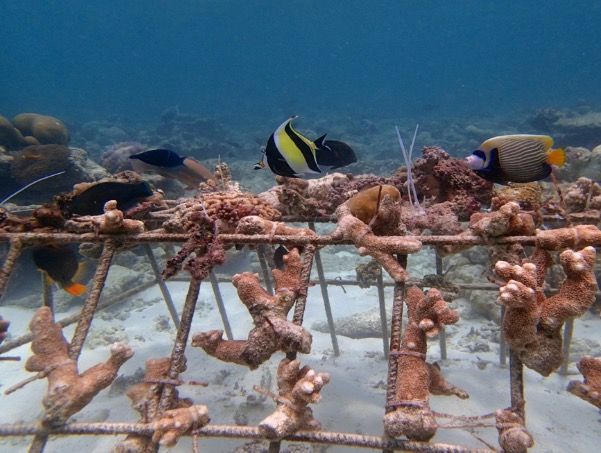 Fish swim around the growing reef structure. Photo credit: Smrutica Jithendranath.
Fish swim around the growing reef structure. Photo credit: Smrutica Jithendranath.
Just after a couple of months, the fragments that settle on these structures show incredible progress. This can be seen when the cable ties around the coral pieces start disappearing, because the coral starts growing in size (see below).
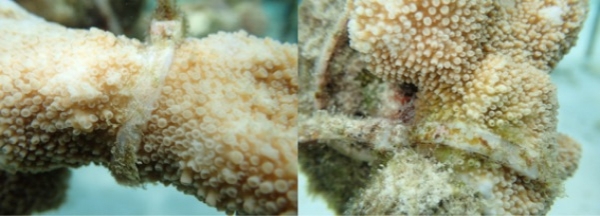 Coral beginning to grow over the cable ties. Photo credit: Verena Weisbauer.
Coral beginning to grow over the cable ties. Photo credit: Verena Weisbauer.
In another method (see below), coral pieces are inserted in between the fibres of a polypropylene rope. This is called a rope nursery/ table nursery. The advantage of this method over the prior one is that it prevents certain fish species (for example, parrotfish) from eating the freshly planted corals.
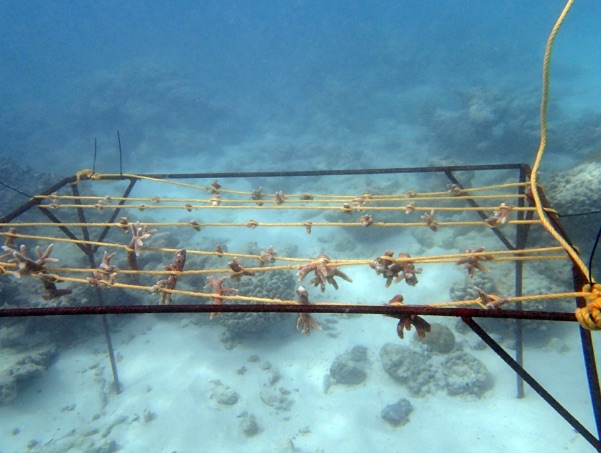 A table/ rope nursery with coral fragments inserted in the rope. Photo credit: Verena Weisbauer.
A table/ rope nursery with coral fragments inserted in the rope. Photo credit: Verena Weisbauer.
Every method and measure taken has one purpose only: marine conservation. Conserving what is naturally available to us has never been more imperative. Global warming is severely affecting our oceans and raising awareness about conservation has taken centre stage. In the Maldives, most of the resort islands are promoting the same and involving the guests in all conservation related activities, including coral planting. With continued efforts towards conservation and preservation of the marine environment, the hope is to resurrect life down under.
 A diver swims past the reef that is filled with hard and soft corals. Photo credit: Smrutica Jithendranath.
A diver swims past the reef that is filled with hard and soft corals. Photo credit: Smrutica Jithendranath.
Cover image: A hawksbill turtle glides through the reef. Photo credit: Smrutica Jithendranath.
This article gives the views of the authors, and not the position of the South Asia @ LSE blog, nor of the London School of Economics. Please read our comments policy before posting.
About the Author
 Smrutica Jithendranath is a marine conservationist, with a masters degree from Victoria university of Wellington, New Zealand. She is currently working in the Maldives as a marine biologist & yoga instructor.
Smrutica Jithendranath is a marine conservationist, with a masters degree from Victoria university of Wellington, New Zealand. She is currently working in the Maldives as a marine biologist & yoga instructor.



